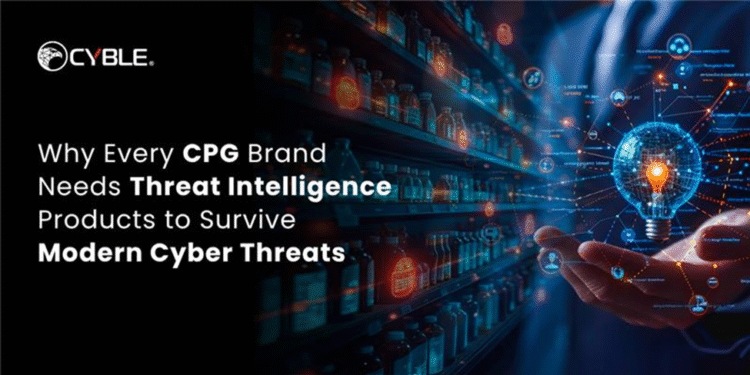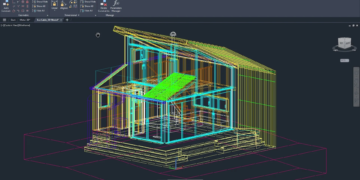The consumer-packaged goods (CPG) industry has seen less innovation compared to other industries. Over the last couple of years, many industries have shifted or relied upon new technologies and AI. However, the CPG industry still lags due to not having an efficient technology partner for operations.
Though the industry itself has adopted computing, many brands are yet to invest in cybersecurity, and that hesitation has cost millions of dollars. Despite technological advances in other areas, the CPG industry continues to lag behind when it comes to security posture. Investing in Threat Intelligence Products can help close this gap by providing deeper visibility into potential threats and improving proactive defense strategies.
A Sector Falling Behind in Innovation and Security
Innovation in CPG has declined over the past years. According to Mintel’s Global New Product Database (GNPD), only 35% of product launches in early 2024 were genuinely new, down from over 50% in 2007. The United States, long regarded as a hub for technological disruption, reported an even lower figure: just 29% of CPG product launches were truly new, far below the global average. Meanwhile, consumer habits are shifting quickly, and private-label alternatives are gaining ground as price-sensitive shoppers seek value over brand loyalty.
CPG brands under pressure to innovate, meet consumer demand, and stay ahead of agile startups are turning to data-driven strategies and AI tools. However, these same technologies, if not secured properly, can become liabilities. Ransomware attacks, supply chain breaches, and data theft—often facilitated by information traded on the dark web—are no longer rare occurrences; they are expected threats.
The Growing Need for Threat Intelligence
Companies need to upgrade their defense mechanisms. Since digitization is no longer a choice, but a need, organizations need to choose between protected and unprotected environments. Threat intelligence systems have already changed the landscape for many, and it has helped organizations go beyond reactive security.
They enable proactive monitoring of risks such as unauthorized access, sabotage, and disruptions to manufacturing and distribution infrastructure. These systems leverage AI and machine learning to process data from both digital and physical sources in real time, helping brands make informed, immediate decisions.
Supply Chain Attacks and Consumer Data Exposure
Unlike regular supply chains wherein supply and demand are met through technologies and partners; the CPG supply chains are more complex and dynamic. This is due to the large group of people, communities, and industries involved in the process. The complexity of global CPG supply chains makes them particularly attractive targets for threat actors.
Geopolitical tensions, raw material shortages, and logistical chokepoints are some of the hurdles that the CPG industry faces. Adding to that mix, ransomware attacks, malware attacks, or data breaches break the chain and can bring the entire production line to a halt.
Moreover, as CPG brands embrace personalization and direct-to-consumer (DTC) models, they gather increasing volumes of consumer data. This data, if not adequately protected, becomes a high-value target. A breach not only results in financial penalties and operational disruption but also erodes consumer trust—something that’s hard to win back in today’s competitive market.
Cybersecurity as a Strategic Investment
The need to invest in cybersecurity is no longer a prolonged decision. But a fact because industries across the globe are heavily investing in new technologies like AI, IoT, and blockchain within the CPG space.
These investments are transforming how companies forecast demand, manage inventory, and develop products. But each new connected device, analytics dashboard, and cloud service represents a potential attack vector.
Traditional firewalls and endpoint protections are no longer sufficient. Today’s security posture must include real-time threat intelligence that spans both the physical and digital environments of CPG operations. With tools that continuously monitor vulnerabilities and respond to dynamic risks, brands can protect intellectual property, ensure regulatory compliance, and maintain the integrity of their operations.
Conclusion
As the CPG industry embraces AI and digital transformation, it faces a growing paradox: the same technologies that drive innovation also increase vulnerability to cyber threats. With malicious actors targeting online retail operations through scams, impersonations, and counterfeit products, traditional security methods are no longer enough. AI Threat Intelligence has emerged as a crucial component in identifying and mitigating these evolving threats.
Cyble addresses this gap by offering advanced threat intelligence tailored to retail and CPG. It proactively detects scams, monitors your digital footprint, and takes action to dismantle fraudulent networks, protecting your brand, supply chain, and customers. In today’s landscape, protecting innovation is as critical as creating it—and Cyble helps ensure both.













